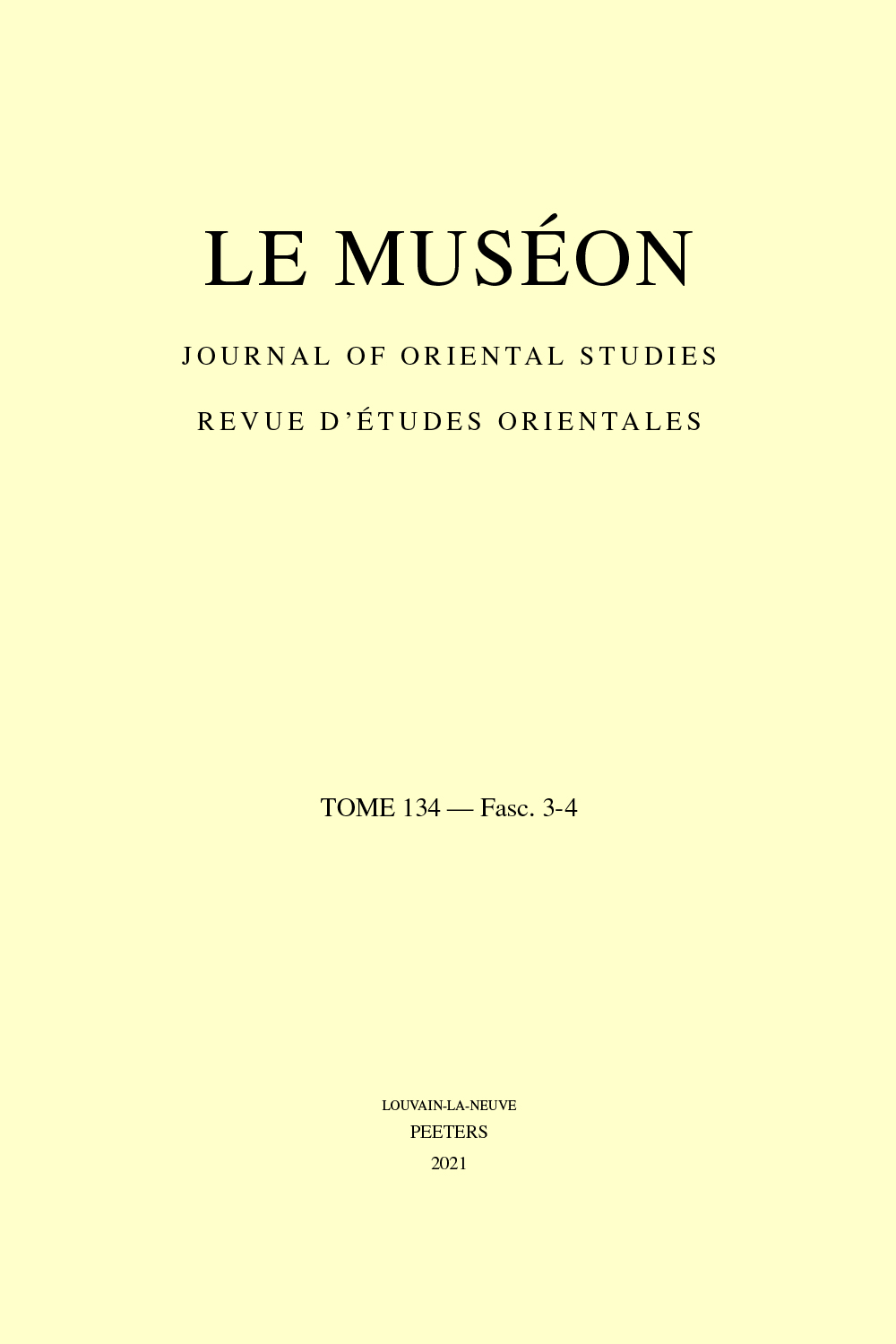 previous article in this issue previous article in this issue | next article in this issue  |

Preview first page |
Document Details : Title: Syriac Ilioupersides Subtitle: The Fall of Troy in Syriac Historiography Author(s): HILKENS, Andy Journal: Le Muséon Volume: 126 Issue: 3-4 Date: 2013 Pages: 285-317 DOI: 10.2143/MUS.126.3.3005391 Abstract : The best-known literary expression of the tale of the Trojan War is probably the Iliad. Yet, although Syriac authors also demonstrate knowledge of that myth, only Athanasius of Baladh (634-688) and Antony of Tagrit (9th century) appear to have had access to the Iliad, probably in Greek. Most Syriac references to the Trojan War are preserved in West-Syrian chronicles, dating from the 6th until the 13th century AD. All but one of these can be retraced to the Greek chronographic tradition, albeit via Syriac intermediaries. In most instances, these chronographic references to the Trojan War are rather brief and merely relate to chronological issues, but a few longer accounts of the war do exist. The two most important sources in this respect are the Chronography of Michael the Great (1126-1199) and the Anonymous Chronicle to the Year 1234. Michael’s Chronography preserves three accounts of the Trojan War, one directly borrowed from the Chronicle of Eusebius (d. 344); another copied from an intermediate source, written by a yet unidentified chronicler who not only had access to Eusebius’ Chronicle, but also to a tradition from Virgil’s Aeneid; and a third, a paraphrase of the fifth book of Malalas’ Chronicle (d. after 570), which is also preserved in the Kitāb al-‘Unwān of Agapius of Mabbug (ca. 941). The |
|


